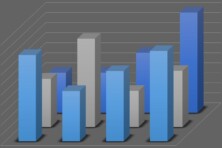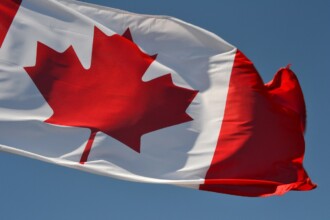The US government has already distributed three rounds of so-called stimulus checks. Is that enough, or should we expect a fourth?

Will there be a 4th stimulus check in 2021?. Source: pexels.com
How much money is needed for one of the strongest economies in the world to recover after the pandemic blast?
COVID-19 stimulus checks
The USA has a proven way to cope with recessions and other unexpected economic emergencies. Stimulus checks sent to taxpayers by the U.S. government quickly stimulate the economy by providing consumers with money to spend. When the aid is used for purchases, it drives up revenues at retailers and manufacturers, spurring on economic growth. Therefore, in 2020, the US government agreed on the $2T Coronavirus Aid, Relief, and Economic Security Act (CARES Act). This year, President Biden’s administration continued distributing stimulus money under the American Rescue Plan Act of 2021 as an advance to the 2021 Recovery Rebate Credit.
The Internal Revenue Service (IRS) issued three Economic Impact Payments during the coronavirus pandemic for eligible people. The sums given to eligible individuals equaled:
- $1,200 in April 2020, with families getting an additional $500 for each child under the age of 17;
- $600 in December 2020/January 2021;
- $1,400 in March 2021, with adult dependents being entitled to a check as well.
In total, about 472 million payments through the first, second and third stimulus rounds have been delivered. IRS Commissioner Charles Rettig said the amount paid out exceeded $807 billion during testimony on Capitol Hill in May.
In the first three weeks of June, the IRS sent over $5.5 billion more to eligible individuals. This was not another round of stimulus payments, though. The June payouts were given to those who received less money than they qualified for. As you may know, the due date of filing annual tax in the US was postponed to May 17 this year. Therefore, for many taxpayers, the third stimulus checks were calculated based on last year’s data. Some of the citizens required a plus-up adjustment after filing their 2020 tax return forms.
Although the government didn’t officially announce the distribution of a fourth stimulus batch, for some taxpayers more aid payments are still to come. It’s possible due to the expanded child tax credit.
Expanded child tax credit
This June, the new governmental initiative allowed low-income families who don’t typically file tax returns to receive some aid as well. The IRS will pay half the total credit amount in advance monthly payments. Eligible families will claim the other half when they file a 2021 income tax return.
The enhanced credit gives families up to $3,600 for each child under 6 and $3,000 for those aged 6-18. This increases the existing credit of up to $2,000 per child under age 17. The expanded credit will be available for single taxpayers with annual incomes up to $75,000, heads of households earning $112,500, and joint filers making up to $150,000 a year. This tax credit will be fully refundable. The first advance payment is scheduled for July 15, 2021.
Fourth stimulus check: to be or not to be?
Some lawmakers are pushing for a proper fourth round of stimulus aid. It’s currently estimated that about 40% of people had their income drop down below its pre-pandemic levels. One in four Americans still struggle to pay their household expenses as well. Citizens and politicians alike are afraid the three portions of stimulus money won’t suffice to remedy the outcomes of the pandemic crisis. Thus, over 80 members of Congress have put themselves on record as being in support of at least one more stimulus check.
Senators support their argument with the Change.org public petition that calls on legislation for recurring $2,000 monthly payments. Some members of Congress suggest new relief payments should be deployed automatically. That means setting a minimum threshold for critical economic indicators, like the unemployment rate. If they fell below a certain figure, stimulus checks would be distributed without any vote from Congress. That payment mechanism might be too costly though. Hence, it needs thorough consideration.
California Governor Gavin Newsom also proposed to send $600 stimulus checks to state residents under a multibillion-dollar California Comeback plan he introduced in May. It’s yet unclear whether the plan will be enacted. However, the state authorities must adopt the budget upon signature between June 15 – July 1, 2021, so the answer will come soon.
Although some separate states like California may still consider additional stimulus money, nationwide distribution currently seems unlikely.
The country in general seems to have taken a stable position on its way to recovery. The U.S. GDP which is a major indicator of economic progress has reached its pre-pandemic level. It increased at an annual rate of 6.4% in the first quarter of 2021. The Conference Board forecasts that US Real GDP growth will rise to 9% (annualised rate) in Q2 2021 and 6.6% (year-over-year) in 2021. The country also added 559,000 new jobs in May, bringing the unemployment rate down to 5.8%. These employment gains are also treated as a sign that the labour market is healing from the pandemic downturn and that government policies are working. Thus, we can see the US fully back on its feet again in 2022.
At the same time, it’s clear that the most affected categories of the population will need further material support at least till the end of the year. For instance, representatives of ethnic minorities in many American cities find themselves left behind by the overall boom in hiring. While the average unemployment rate across the US is only 5.8%, for some minorities, the indicator reaches double digits, depending on the metro area. For more than half of the minority groups, local unemployment rates have not fully recovered to March 2020 levels, when stay-at-home orders were first enacted. Black women suffered the most from mass job cuts, and they are still very vulnerable in economic terms. In general, the nationwide unemployment rate is still much higher than the 3.5% seen before the pandemic started.
President Biden doesn’t deny further relief payments may be necessary. According to his spokesperson Jen Psaki, he’s open to “a range of ideas on what would be most effective and what’s most important to the economy moving forward”. Nevertheless, the most promising proposals have already been outlined in the American Rescue Plan Act 2021. This plan doesn’t mention another batch of stimulus checks.
Moreover, many states have urged the government to terminate federal unemployment benefits early. Governors say continuous payouts are keeping Americans from returning to the labour market. President Joe Biden did not see the evidence that unemployment benefits prevent people from working, but he also admitted people who do not accept offers for “suitable jobs” would lose unemployment benefits unless they have a specific coronavirus-related concern.
Therefore, part of the Coronavirus Relief fund will go directly to businesses to boost pay for workers, and provide return-to-work bonuses. In addition, some more money will be invested in education, child care, nutrition, and paid family leave under the American Families Plan. Meanwhile, the American Jobs Plan aims to create millions of good jobs while rebuilding the country’s infrastructure.
Although the country is expecting strong economic growth in the very near future, its budget is unlikely to cover both millions of new individual relief payments, and the costly long-term infrastructure spending initiative. At the moment, the plans proposed by the President’s administration are seen as more beneficial for the nation’s future than 4th stimulus checks or recurring aid payments.
SEE ALSO:









